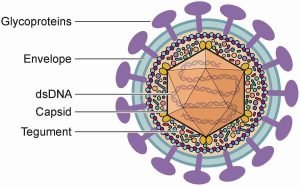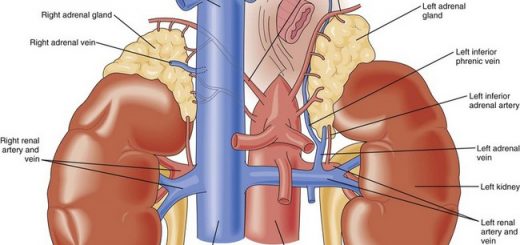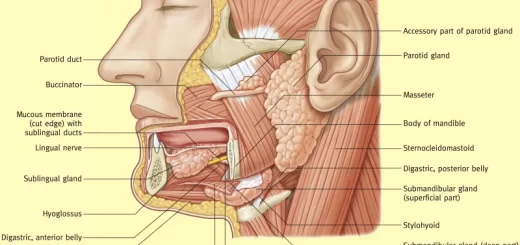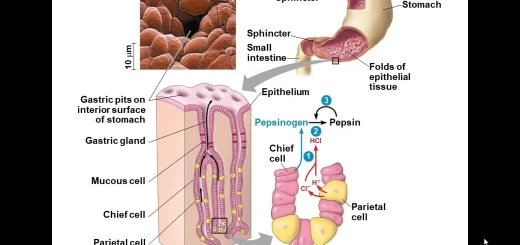Herpesviruses structure, types, Herpes simplex viruses, Genital Herpes and Skin Infections
The herpesviruses are an important group of large (DNA) viruses that includes important human viral pathogens, The outstanding property of herpesviruses is their ability to establish lifelong persistent infections in their hosts and to undergo periodic reactivation, Their frequent reactivation in elderly and immunosuppressed patients causes serious health complications.
Herpesviruses
The herpesviruses that commonly infect humans are numbered from human herpesvirus 1 (HHV-1) to HHV-8 but are commonly referred to by their individual virus names Herpesviruses have been linked with malignant diseases in humans and lower animals EBV with Burkitt lymphoma of African children, with nasopharyngeal carcinoma, and with other lymphoproliferative disorders (HHV-8) with Kaposi sarcoma and Marek disease virus with a lymphoma of chickens.
Structure of Herpesviruses
The herpesviruses are large, enveloped double-stranded DNA viruses with an Icosahedral capsid, There is little DNA homology among different herpesviruses except for HSV-and HSV-2.
Classification of Herpesviruses
Family: Herpesviridae
Human herpesviruses are grouped into three subfamilies based on differences in viral characteristics (genome structure, tissue tropism, cytopathologic effect, and site of latent infection), as well as the pathogenesis of the disease and disease manifestation.
Herpes simplex viruses
HSV is extremely widespread in the human population, There are two distinct HSV types 1 and 2 (HSV-1 and HSV-2), Their genomes are similar in organization and exhibit substantial sequence homology (50 %).
The two viruses cross-react serologically, but some unique proteins exist for each type, Transmission of HSV-1 is spread by contact with saliva and oral secretions, and HSV-20 is transmitted sexually or from a maternal genital infection to a newborn, The difference in the mode of transmission results in different clinical features of infection.
Most of the HSV-1 lesions occur above the waist i.e., HSV-1 is responsible for around 90% of oral and ocular lesions, whereas HSV-2 is responsible for 90% of genital lesions caused by these viruses, However, these patterns are becoming less distinct, and both viruses can cause either presentation. The HSVs establish latent infections in neurons and recurrences are common.
Pathogenesis and Immunity
HSV is transmitted by contact with a susceptible person with an individual excreting virus. The virus is a cytolytic virus that infects epithelial cells of the skin or mucous membrane. The typical lesion is a vesicle that contains serous fluid filled with virus particles and cell debris, when the vesicle ruptures the virus is liberated and can be transmitted to other individuals.
Viral replication occurs first in the skin or mucous membrane at the initial site of infection, Virus then invades local nerve endings and is transported by retrograde axonal flow to dorsal root ganglia, where, after further replication, latency is established for the lifetime of the host.
On reactivation, the virus then returns to the initial site of infection, and the infection may be inapparent or may produce vesicular lesions, In general, oropharyngeal HSV-1 infections result in latent infections in the trigeminal ganglia, whereas genital HSV-2 infections lead to latency in the lumbar and sacral ganglia.
During primary infections, IgM antibodies appear transiently and are followed by IgG and IgA antibodies that persist for long periods, After recovery from a primary infection, the virus is carried in a latent state in the presence of antibodies.
These antibodies do not prevent reinfection or reactivation of latent viruses but may modify subsequent disease, so that recurrent infections are less severe, more localized, and of shorter duration than the primary episodes. Cell-mediated immunity is important in controlling both primary and recurrent HSV infections.
Clinical Findings
HSV-1 and HSV-2 may cause many clinical entities, and infections may be primary or recurrent, Primary infections are usually mild, and most are asymptomatic.
Oropharyngeal disease
Gingivostomatitis: Primary HSV-1 is usually asymptomaticو Symptomatic disease occurs most frequently in small children and involves the buccal and gingival mucosa. Symptoms include fever, irritability, and sore throat, vesicular and ulcerative lesions in the mouth. Herpes labialis (fever blisters or cold sores): is a milder, recurrent form and is characterized by crops of vesicles, usually at the mucocutaneous junction of the lips or nose.
Keratoconjunctivitis
HSV infections may occur in the eye, producing severe keratoconjunctivitis, Recurrent lesions of the eye are common and appear as dendritic keratitis or corneal ulcers or as vesicles on the eyelids, With recurrent keratitis, there may be progressive involvement of the corneal stroma, leading to permanent scarring, corneal damage, and blindness
Genital Herpes
The genital disease is more often caused by HSV-2, It is characterized by vesiculoulcerative lesions of the penis of the male or of the cervix, vulva, vagina, and perineum of the female, Anal sex can lead to HSV proctitis.
In primary genital herpes infections, the lesions are usually painful, recurrences tend to be mild and of a shorter duration, and some may be asymptomatic, Whether a recurrence is symptomatic or asymptomatic, a person shedding virus can transmit the infection to sexual partners.
Skin Infections
Infection occurs through cuts or abrasions that become contaminated with the virus. Skin lesions are seen on the fingers of dentists and hospital personnel, in thumb-sucking children, and in people who have genital HSV infections (herpetic whitlow).
Meningitis/Encephalitis
HSV-1 is the most common viral cause of sporadic encephalitis and results in significant mortality and morbidity, those who survive often have residual neurologic defects. HSV meningitis may be a complication of genital HSV-2 infection and is often a self-limiting condition.
Neonatal Herpes
About 75% of neonatal herpes infections are caused by HSV-2, Infection of the newborn may be acquired in utero, during birth (the most common route of infection), or after birth. Neonatal herpes is a severe and often fatal disease, Babies exhibit three categories of disease:
- Lesions localized to the skin, eye, and mouth.
- Encephalitis with or without localized skin involvement.
- The disseminated disease involves multiple organs including the liver, lung, and other organs, as well as the central nervous system.
Infections in Immunocompromised Hosts
Immunocompromised patients are at increased risk of developing severe HSV infections, In most cases, the disease reflects the reactivation of latent HSV infection and may involve the respiratory tract esophagus and intestinal mucosa.
Laboratory Diagnosis
Molecular Detection
Polymerase chain reaction (PCR) assays can be used to detect viruses in vesicle swabs, blood, CSF, and tissue and are sensitive and specific PCR amplification of viral DNA has become the method of choice for detection and differentiation of HSV-1 and HSV-2 for most patients.
Isolation and Identification of Virus
HSV is relatively easy to cultivate, with cytopathic effects typically occurring in 2-3 days, The agent is then identified by neutralization Test, and immunofluorescence staining with specific antiserum PCR.
Cytopathology
A rapid cytologic method is to stain scrapings obtained from the base of a vesicle (eg, with Giemsa’s stain), The presence of multinucleated giant cells with intranuclear inclusions indicates that herpesvirus is present.
Serology
Serologic procedures are useful only for diagnosing a primary HSV infection and for epidemiologic studies, They are not useful for diagnosing recurrent disease because a significant rise in antibody titers does not usually accompany the recurrent disease, Detection methods available include neutralization, immunofluorescence, and enzyme-linked immunosorbent assay.
Treatment, Prevention, and Control
Several antiviral drugs have proved effective against HSV infections, including acyclovir, valacyclovir, and penciclovir, All are inhibitors of viral DNA synthesis, The drugs may suppress clinical manifestations, shorten time to healing, and reduce recurrences of genital herpes. However, none can eliminate the latent infection, and Drug-resistant virus strains may emerge.
Avoidance of direct contact with lesions reduces the risk of infection, In patients with genital herpes, transmission can be reduced by antiviral therapy and condom usage, Delivery by cesarean section has been used for pregnant women with genital herpes lesions to prevent transmission to newly born. Wearing gloves can prevent the acquisition of herpetic whitlow in dentists hospital personnel. No vaccine is currently available for HSV.
You can follow science online on YouTube from this link: Science online
You can download Science online application on Google Play from this link: Science online Apps on Google Play
Vaccines types, Live vaccines, Inactivated vaccines, Subunit vaccines, Naked DNA & mRNA vaccines
Adaptive (Acquired immunity) types, Difference between Innate & Adaptive Immune responses
Features and classification of viruses, Defective viruses & Viral vectors used for gene therapy
Cytokines function, use, definition, inflammation & side effects




